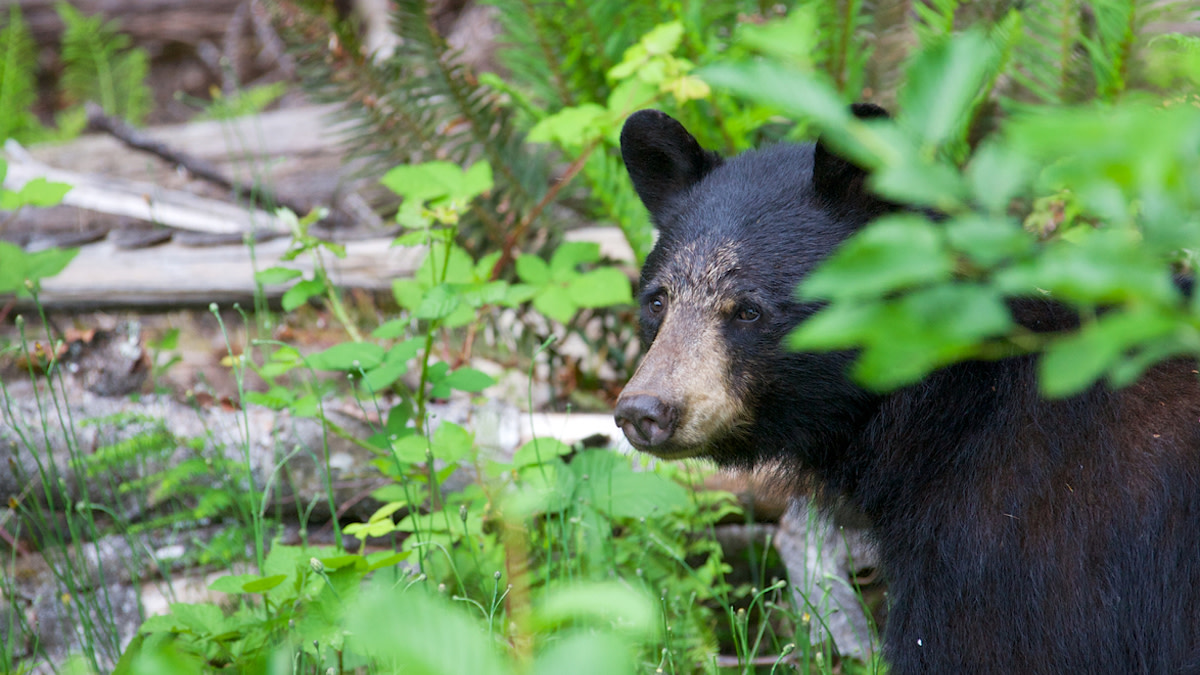
My family and I worked a patch of blackcap raspberries along a road winding through the mountains of central Pennsylvania. We’d waited until the heat of the July day broke with the evening to come pick. With only an hour of light left, we quickly tried to fill a gallon to freeze, and hopefully a cup or two to sprinkle on vanilla ice cream when we returned home.
I’d seen the purple canes trampled by the black bear as we picked. The scat full of seeds. The log clawed apart for grubs. But I’d assumed the activity was from the night before, and that the bear wouldn’t return again until after dark.
As we pushed farther down to where the patch pinched between a small cliff and the road, I heard a crushing ahead in the brambles. The young bear busted toward the road in a blur, crossed the macadam, and disappeared across the creek, leaving us silently holding our buckets.
June, July, and August are months of plenty when it comes to ripe wild fruit: blackberries, serviceberries, elderberries, chokecherries, huckleberries, etc. Both humans and bears rush to their trusted patches to collect what is only available for a few precious weeks a year. Bears are ravenous for these sweet calories as they try to pack on fat for winter, and folks across the country have dessert, jam, jelly, and salsa recipes ready to dust off. This food source can be a common setting where humans and bears cross paths.
Here are a few tips to make berry season safe for you and your local bears.
Mid-Day Picking
Across 20 years of berry picking, the only bear encounter I ever had in a patch was that July evening. Bears are covered in some of the best insulation on the planet. When the mercury rises, they want to sulk away in the shade and lay down. This is also what most humans want to do, but when it comes to heading out for berries, go when it’s the most uncomfortable for a creature always wearing a fur coat. Be sure to stay hydrated and wear sunscreen though—melanoma and dehydration have much higher mortality rates than bear encounters.
As summer transitions to fall and berries ripen in higher elevations, bears will enter hyperphagia and become more active during the daylight hours. Be aware of this shift as it will likely increase your chance for an encounter during the day.
Partner Picking
This is consistent bear advice across outdoor recreation: Go with a buddy. Not only will you cumulatively pick more berries, but you will also talk and sound larger moving through a patch. A chatty Chet or Cathy is a great berry picking partner.
If you can’t convince anyone to come with you to your Shangri-La of huckleberry patches, make sure you don’t sit silently picking for extended periods of time. We all love a bush or cane so laden with fruit we can spend five minutes picking every berry within arm’s length, but that is also the perfect way to surprise a bear who might also be working the patch. Talk to yourself, sing songs, or play a podcast on one of those portable speakers every sun-burnt river-tubber rides down the river with.
Pick the Edge
This is difficult advice to follow. There always seems to be a few berries just a little deeper in, just a few feet beyond your reach. Don’t they look bigger than all those in your bucket? I often go a few steps further into the patch, but the tangle of a raspberry or blackberry bramble creates a lot of shade and brush for bears to hide and rest. These are perfect places for daybeds, particularly if there are a few mature trees or bushes scattered throughout the patch.
While a serious challenge in a berry plot, always have a clear line of sight. If I don’t have that and want to move deeper, I’ll yell and throw sticks or rocks in the direction I’m heading. When the deer leaps away from your flung projectile don’t worry about the adrenaline spike. It’ll happen every time.






Conversation